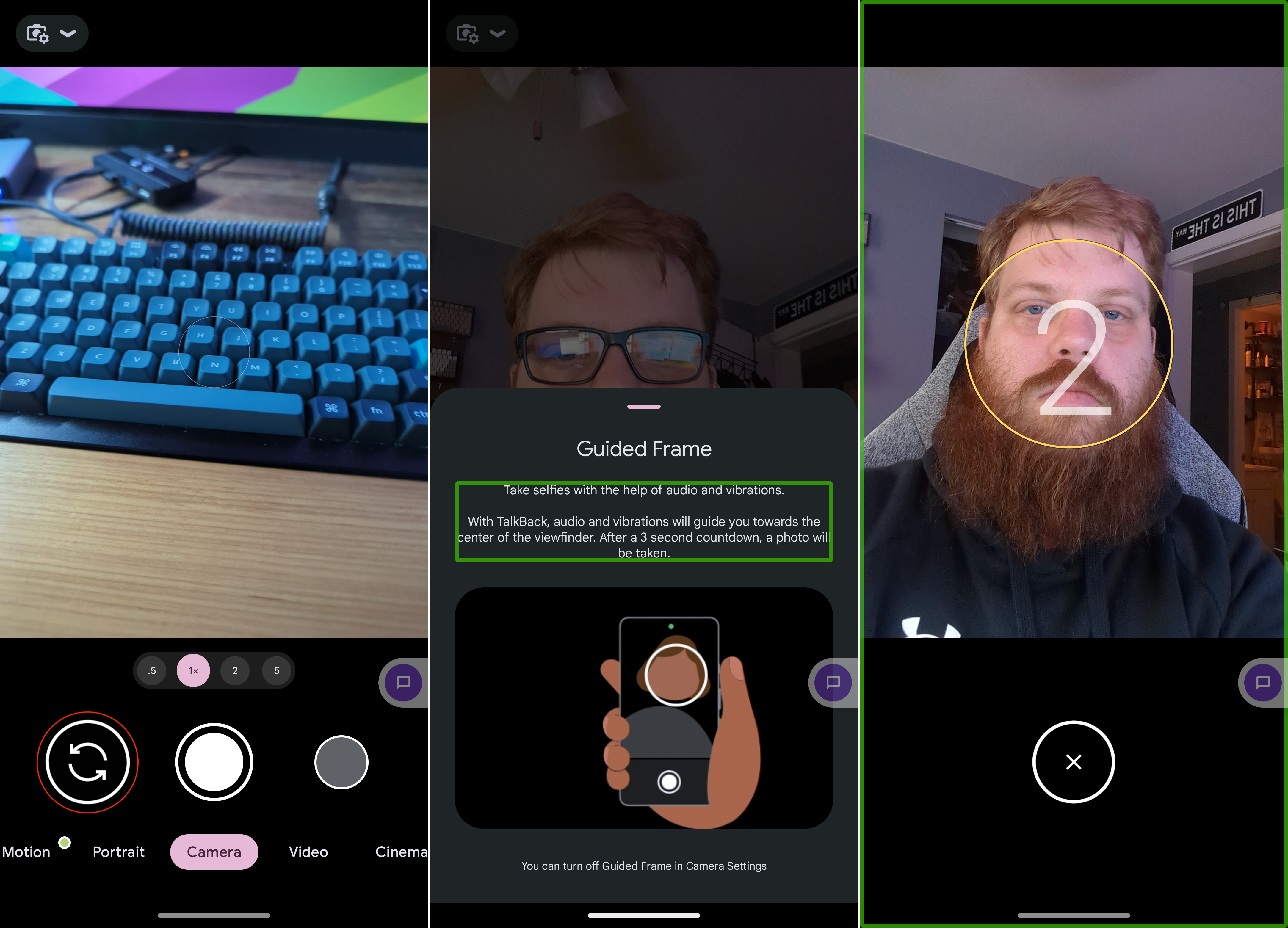How to use Guided Frame on Pixel 7
Let your phone help you take a selfie.

As is the case with every new Pixel phone release, Google likes to put a lot of emphasis on the cameras. This trend continued with the Pixel 7 and Pixel 7 Pro, which saw the introduction of a new 48MP main lens, improvements to Night Sight, and the ability to unblur photos.
However, that's not all that Google implemented with its best Android phone, as there are some new accessibility features. One example is Guided Frame, which makes use of the built-in TalkBack functionality. With this enabled, those who are blind or low-vision will be able to take selfies thanks to a series of audio cues and haptic feedback.
How to use Guided Frame on Pixel 7
1. Open the Settings app on your Pixel 7 or Pixel 7 Pro.
2. Scroll down and tap Accessibility.
3. Scroll down and tap TalkBack.

4. Tap the toggle next to Use TalkBack.
5. Follow the on-screen steps to learn how to use TalkBack, if this is your first time enabling the feature.
Be an expert in 5 minutes
Get the latest news from Android Central, your trusted companion in the world of Android
6. Tap Allow.

7. Tap TalkBack shortcut.
8. Tap Allow.
9. Select either Tap accessibility button or Hold volume keys.

10. Double-tap the Power button to quickly launch the Camera.
11. Switch to the Selfie camera using the button to the left of the Shutter.
12. Enable TalkBack using the previously-selected shortcut.
13. Position your face in the frame.
14. Your phone will give you audible instructions if you are not properly framed.
15. Once you are lined up in the frame, a three-second countdown will commence.

One of the nice things about those who need to use Guided Frame on Pixel 7 is that the audio feedback will let you know if you're lined up correctly or not. It will also provide haptic cues when you are in the center of the preview, so you can keep the phone in the right place as the countdown timer begins and the selfie is taken.
We need more features like this
New accessibility features don't really grab headlines in the same way that other features do. But the reality is that smartphones should be available and accessible for anyone who wants one, regardless of whether you have any disabilities or not. Over the past few years, we've been seeing phone makers implement more and more accessibility features so that everyone can enjoy the same great experience.
The only thing we can do now is hope that Google, Apple, Samsung, and others continue this trend. Smartphones are absolutely wonderful, and people shouldn't be limited in being able to take advantage of their capabilities.

Incredible value
The Pixel 7 might not be the flashiest smartphone out there, but it sure is pretty darn incredible. Google's Tensor G2 chip also offers a much better experience and helps enable new features that previously weren't possible.

Andrew Myrick is a Senior Editor at Android Central. He enjoys everything to do with technology, including tablets, smartphones, and everything in between. Perhaps his favorite past-time is collecting different headphones, even if they all end up in the same drawer.
